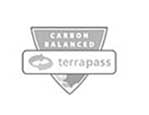Determine What You Want
What problem are you trying to solve? Mold, drafts, pests? High energy bills? If you don’t know what you want, you can’t look for the solution.
This sounds very basic, I know. But you’d be shocked at how many people jump in before they know what they want and then go buy something based on R-Value because that’s what everyone is talking about.
Determine Your Investment
Wait, isn’t this putting the cart before the horse? Don’t you need to see price ranges first before you decide what the budget is?
No, because budgeting means thinking about what you REALLY can afford to invest. People often default to the lowest price possible if they haven’t set a budget ahead of time.
But you understand payback periods and you recognize saving on energy costs may in fact be the best investment you can make right now. You understand you have 1 shot at doing this easily. (Your investment is even a hedge against higher energy costs in the future).
Then you take into account any tax credits and local incentives and decide on a range.
Now consider why we do this. If you just call around for prices for X, you’ll be thinking in terms of prices. If you don’t know your budget, what are you going to choose? The lowest price of course.
By determining your budget ahead of time, you can ignore the lowest price categories because you realize you’re not going to get as much of a return on your investment. And that you get what you pay for.
And when you find the right solution, you think of how you can afford it.
Educate Yourself
Find out what you can about the different options in your investment range. Ask questions. Find companies that will stand by their product or service, and frankly stand by you. There are great companies out there who want you to get the results you want to get. Find them.
As you prepare, make sure you calculate the volume of what you’re doing. Yes, it involves basic math. Here’s how to do it.
1. Grab a tape measure and measure the length and the width of the area in feet that you’re going to be insulating.
2. Take these two numbers and multiply them. This is your square footage.
3. Repeat for each new area. Add all the square footages up. This is the total square footage.
Even if you’re planning on hiring someone, you should know these numbers so you can check their math. You don’t want someone quoting you 2,000 square feet if it’s in fact 1,500. That’s off by 33%! If that seems insignificant, try paying 33% more the next time you’re at the gas pump or paying your mortgage.
Do the Project
People love to hesitate, to hold off, because we hate to make mistakes.
Once you’ve made an intelligent, informed decision, it’s important to follow through. Get the project done so you can enjoy the rewards you want in the first place.
Getting the Result You Want
The fact you’re reading this means you really care about getting top shelf results. It can seem like a jungle out there, but it doesn’t have to be. Energy Saving and home improvement projects can be quick and easy once you know what you want and find the avenue to get it done. Making a smart decision is taking the bull by the horns and getting the result you’re after.
If you have a home with walls already closed up on both sides, you’re not helpless. Check out this VIDEO to see how you can get the benefits you need.









